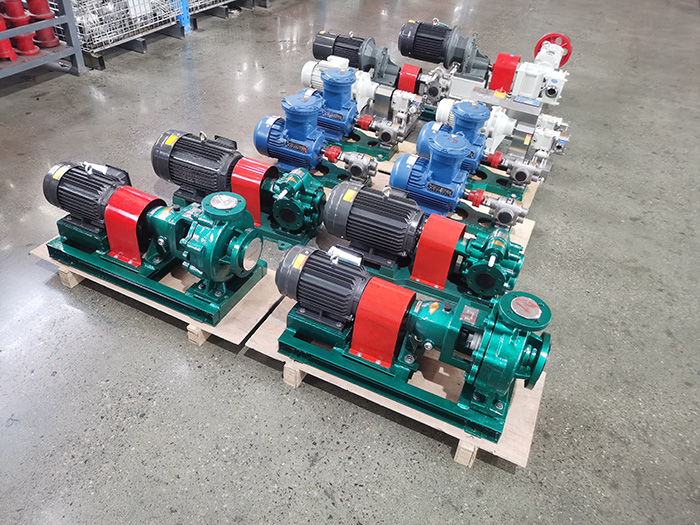Rotary lobe pumps and gear pumps are two commonly used types of positive displacement pumps. While they both serve the purpose of transferring fluids, there are significant differences between the two.
Operating Principle:
- Rotary Lobe Pump: This pump operates using two or more lobes that rotate within a casing, creating a sealed chamber. As the lobes rotate, the fluid is drawn into the chamber and then discharged through the outlet.
- Gear Pump: Gear pumps, on the other hand, operate using intermeshing gears. The fluid is trapped in the spaces between the teeth of the gears and is carried from the inlet to the outlet as the gears rotate.
Flow Rate and Pressure:
- Rotary Lobe Pump: Rotary lobe pumps typically offer higher flow rates compared to gear pumps. They are capable of handling viscous fluids with ease, making them suitable for applications that require high flow rates and moderate pressures.
- Gear Pump: Gear pumps are known for their ability to generate high pressures, making them ideal for applications that require precise pressure control. However, their flow rates are generally lower compared to rotary lobe pumps.
Viscosity Handling:
- Rotary Lobe Pump: Rotary lobe pumps excel in handling highly viscous fluids, such as slurries and thick pastes. The large clearances between the lobes and the casing allow for efficient transfer of viscous fluids without causing damage or clogging.
- Gear Pump: While gear pumps can handle a wide range of viscosities, they may struggle with extremely viscous fluids. The close tolerances between the gears can lead to increased friction and potential issues with fluid flow.
Ease of Maintenance:
- Rotary Lobe Pump: Rotary lobe pumps are relatively easy to maintain. The lobes can be easily accessed for inspection and cleaning, and the pump does not require extensive disassembly for routine maintenance.
- Gear Pump: Gear pumps can be more complex to maintain due to the intermeshing gears. Disassembling the pump for maintenance may require more time and effort.
Cost Considerations:
- Rotary Lobe Pump: Rotary lobe pumps tend to be more expensive upfront due to their robust construction and ability to handle high viscosities. However, their efficiency and durability often justify the initial investment.
- Gear Pump: Gear pumps are generally more cost-effective, making them a popular choice for applications that do not require handling high viscosities or demanding operating conditions.
The choice between a rotary lobe pump and a gear pump depends on the specific requirements of your application. If you need to handle highly viscous fluids and require higher flow rates, a rotary lobe pump is likely the better option. On the other hand, if precise pressure control is crucial, and you can compromise on flow rates, a gear pump may be more suitable. Consider factors such as viscosity, flow rate, pressure, maintenance requirements, and budget when making your decision.
